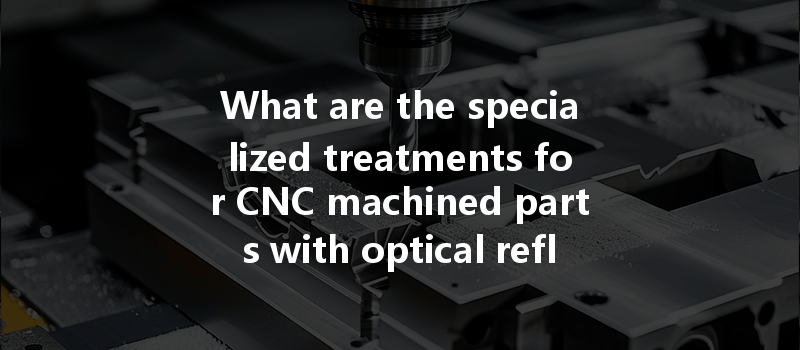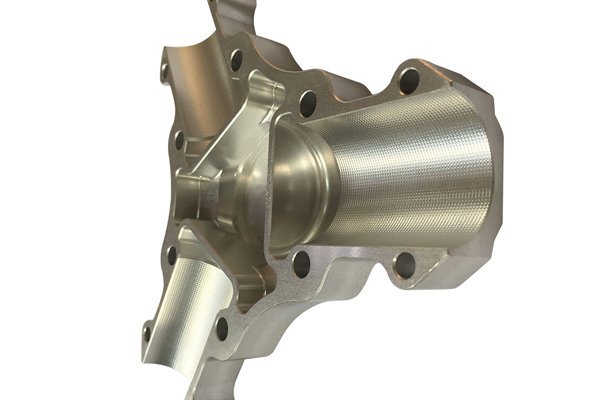Did you know that the optical properties of a surface can significantly influence the functionality and aesthetic appeal of various machined parts? In the realm of manufacturing, especially in industries like optics, electronics, and automotive, the ability to produce components with specific optical reflection characteristics is not just a luxury—it’s a necessity. As businesses continue to demand high-precision components that also meet strict aesthetic criteria, understanding the specialized treatments available for CNC machined parts becomes crucial.
In this extensive blog, we will delve into the intricacies of the specialized treatments for CNC machined parts that require optical reflection considerations. We will explore various processes, materials involved, and techniques that can help achieve the desired optical properties while maintaining structural integrity and cost-effectiveness.
The Importance of Optical Reflection in CNC Machining
Optical reflection plays a critical role in many industries. In the lighting industry, reflectors must bounce light precisely where it’s needed. In electronics, components need to manage thermal properties and light emission efficiently. The automotive sector relies on both functionality and aesthetics, ensuring that parts not only work optimally but also present a visually appealing facade. In such scenarios, achieving the right balance between performance and optical characteristics can define the success of a product.
Types of Optical Reflection Requirements
Not all optical reflection requirements are the same. Here are a few categories that we will examine in detail:
Understanding these categories helps lay the groundwork for exploring the available treatments in CNC machining.
Factors Influencing Optical Reflection in CNC Machining
When machining parts with optical reflection requirements, multiple factors affect the outcome, including:
Specialized Treatments for Enhanced Optical Properties
CNC machining allows for a myriad of processes to optimize parts for the required optical reflection. Below are some specialized treatments worth considering:
Electropolishing:
Electropolishing is an electrochemical process that removes a thin layer of material from a metal surface, resulting in a smooth, shiny finish. This technique is beneficial for materials like stainless steel and aluminum, enhancing their reflective properties.
Polishing:
Traditional polishing is a mechanical process that involves the use of abrasives to achieve a smooth surface. Although labor-intensive, it allows for an excellent finish essential for mirrored effects.
Micro-Machining:
Micro-machining techniques enable manufacturers to achieve incredibly fine details in small components. This level of precision is essential for optics and other components requiring specific reflective properties.
PVD Coating (Physical Vapor Deposition):
PVD is a modern technique used to deposit thin films of metals or compounds onto a substrate. This coating enhances the material’s optical properties, providing a protective layer that can be tailored to specific reflective requirements.
Sputter Coating:
Similar to PVD, sputter coating involves the deposition of thin films through a process of dislodging atoms from a target material. This technique is often used for applying anti-reflective coatings on optical lenses.

Anodizing is an electrochemical process that converts the metal surface into a durable, corrosion-resistant layer. This treatment can be especially beneficial in enhancing the aesthetic quality of aluminum parts while also allowing for varying levels of reflectivity and color.
Laser Texturing:
Laser technologies can be employed to create specific surface patterns that manipulate optical properties. This technique is advantageous for achieving controlled diffusion or customized light scattering effects.
Etching:
Chemical or masking etching can be used to create textures that enhance certain reflective properties. This can help diffuse light or reduce glare in applications like screens and lighting fixtures.
Reflective Alloys:
Utilizing high-reflectivity alloys, such as silver or gold-coated components, can drastically improve the reflective properties of specific parts. However, considerations regarding cost and application need to be made before opting for such materials.
Polymeric Coatings:
For parts needing anti-reflective properties, specialized polymeric coatings can be applied. These coatings reduce glare and provide an additional layer of protection to the underlying materials.
Challenges and Solutions in Achieving Desired Optical Properties
While specialized treatments can significantly improve optical properties, several challenges may arise during the CNC machining process. Below are some common obstacles manufacturers face, along with strategies to overcome them.
Common Challenges
Effective Solutions
Case Studies: Successful Application of Optical Treatment in CNC Machining
Case Study 1: Automotive Reflectors
An automotive manufacturer set out to improve the reflectivity of their headlight reflectors to comply with new safety standards. By employing a combination of electropolishing and PVD coating, they were able to achieve a 25% increase in light output, significantly enhancing safety and performance while meeting their production schedule.
Case Study 2: Optical Lenses
A company specializing in optical devices faced issues with glare in their lens production. By investing in advanced coating technologies, specifically anti-reflective coatings through sputtering, they were able to reduce glare by 90%, resulting in improved customer satisfaction and reduced return rates.
In the competitive landscape of manufacturing, achieving the perfect optical reflection on CNC machined parts is not merely an exercise in aesthetics; it is integral to the product’s functionality and market success. Understanding the various specialized treatments available—ranging from surface finishes to durable coatings—ensures that manufacturers can meet stringent quality standards while managing production costs effectively.
Ultimately, the knowledge of how to enhance optical properties through CNC machining techniques not only provides a competitive edge but also helps usher in innovation across different sectors. As technology continues to advance, embracing these specialized treatments will be vital for companies wishing to stay ahead in the ever-evolving manufacturing landscape.
As you continue to think about the possibilities inherent in CNC machining and optical reflection, remember that every detail matters in achieving both functionality and aesthetic appeal. This consideration will not only elevate your product’s quality but can also determine its viability in today’s market.






